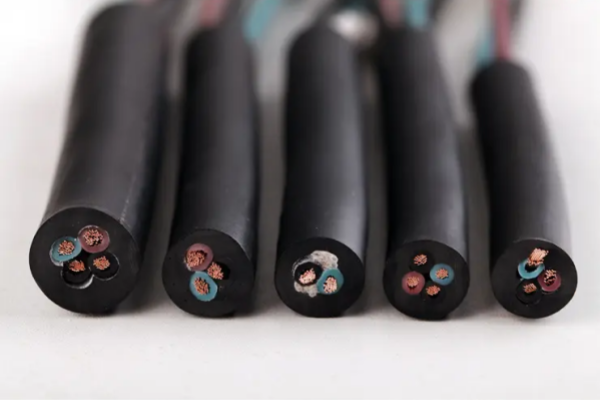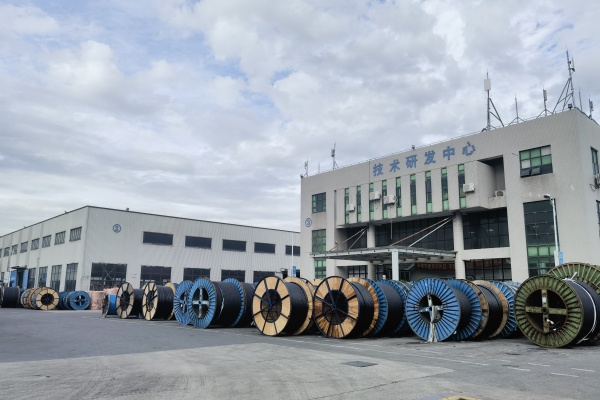介绍: 这 “文明的生命线” 跨时间和空间
在 1858, 五次令人心碎的失败后, 第一个跨大西洋电报电缆成功铺设了, 将古老和新世界和将人类文明带入一个新时代. 这电缆, 带有希望和野心, 使维多利亚女王的317字电报遍历大西洋, 经过16小时的艰苦旅程,到达北美. 尽管按照今天的标准缓慢而效率低下, 这一巨大的工程壮举是当时的突破, 标记人类的第一个真正征服地理障碍. 它通过物理连接遥远的大陆为全球化奠定了基础.
电缆 - 看似普通的导体被包裹在绝缘材料中 - 是, 实际上, 文明的隐藏动脉. 它们使能量和信息无缝传播, 打破身体的限制并促进全球连通性. 不仅仅是传输工具, 电缆是人类创造力的证据, 充当个人之间的关键联系, 城市, 和国家. 从青铜时代的静电实验到5G时代的超导网络, 电缆的演变不仅是技术进步的历史,而且是人类如何重新定义能量分布和重塑社会结构的编年史. 像一个看不见的线, 电缆通过人类进步的里程碑编织, 证明技术革命和社会转型.

我. 史前时代: 能源和信息的原始传播
1. 这 “原型” 古代电缆的
最早 600 公元前, 希腊哲学家Thales通过摩擦琥珀来吸引羽毛和小颗粒,观察到静电效应. 虽然不知道基本原则, 他的实验为将来的探索奠定了基础. 在东方, 汉朝学者王郑在他的作品lunheng中记录了类似的现象, 描述洛德斯通如何吸引小物体,这证明了东方对电磁主义的见解.
古代文明在传输能量和材料方面也取得了长足的进步. 罗马人设计了庞大的铅基渡槽系统,以在城市供应干净的水, 确保城市可持续性. 在埃及, 法老利用铜工具和大量劳动力来建造巨大的金字塔, 绝对力量的符号. 虽然与现代电缆大不相同, 这些早期传输系统代表了人类了解导电材料和能量分配的第一步. 他们形成了能源传输技术的胚胎阶段, 作为电气传输未来进步的基础.
2. 电力驯化
直到18世纪,人类才真正真正 “驯化” 电. 在 1745, 荷兰莱顿大学的科学家发明了莱登罐子, 启用第一个成功的存储和电荷短途传输. 这一突破为随后的电气实验提供了关键工具. 之后, 在 1800, 意大利物理学家亚历山德罗·沃尔塔(Alessandro Volta, 创建世界上第一个化学电池. 这种创新使电流连续稳定, 激发对导体材料的系统研究. 金属等金属, 铜, 铁成为实验实验不可或缺的, 为电报时代奠定基础. 这些早期的电气发现, 像小火花, 点燃了人类对电力的想象力,并照亮了未来技术进步的道路.
二. 第一次革命: 电报电缆和全球化浪潮
1. 摩尔斯密码和 “信息爆炸”
在 1837, 美国发明家塞缪尔·莫尔斯(Samuel Morse)成功地开发了电报,并实施了一条商业电报系列 64 华盛顿之间的公里, 华盛顿, 和巴尔的摩, 标志着电报时代的官方开始. 使用简单的点和破折号序列, 摩尔斯密码将沟通时间从几周到仅几分钟, 显着提高信息传输的效率. 在这个阶段, 电报电缆 用纯铜导体用gutta-percha隔热. 尽管它们的电导率仅限于 58 MS/m, 这足以支持城市际交流, 加强城市联系并改变日常生活.
2. 跨大西洋电缆: 高风险努力
在 1858, 跨大西洋电缆项目启动了 - 经常被描述为 “太空竞赛” 工业革命, 引起全球关注. 美国企业家赛勒斯·西菲尔(Cyrus West Field)投资了惊人的300万英镑 (等效于大约 $450 今天百万) 并组建了一个庞大的工程团队来弥合大西洋. 然而, 该项目面临着巨大的挑战; 经过五次失败的尝试和多次沉船, 成功终于取得了.
尽管取得了这一成就, 严重的技术缺陷很快暴露. 深海的巨大压力导致电缆的绝缘材料分解, 导致信号衰减长达 90%, 严重损害的传输质量. 工程师坚持改进设计, 将铅鞘厚度提高到6mm,并实现双装甲结构,以增强压缩性和整体耐用性. 最后, 在 1866, 新近改进的跨大西洋电缆实现了稳定的变速箱, 标记海底电缆技术的成熟.
3. 电缆驱动的社会转变
跨大西洋电缆的成功部署具有深远的社会影响, 驱动各个部门的重大转变:
金融革命: 伦敦和纽约的股票市场实现了实时价格同步, 将套利机会从几个月减少到几个小时. 这提高了市场效率并加速了全球资本流动.
政治控制: 大英帝国利用海底有线网络来建立实时治理的殖民地, 特别是在印度. 命令传输的效率提高了 50, 巩固英国在亚洲的统治地位.
文化转变: 媒体行业接受了 “实时报告。” 《伦敦时报》利用电报电缆接收有关美国内战的最新信息, 导致一个 200% 流通激增. 新闻传播的速度和范围急剧扩大, 革命性的新闻业.

iii. 电力电缆: 照亮世界的能量动脉
1. DC与AC之间的世纪战斗
在 1882, 美国发明家托马斯·爱迪生(Thomas Edison)建立了第一个大规模直流电 (DC) 纽约珍珠街车站的电网, 标志着集中电力供应的开始. 然而, 由于铜电缆的阻力损失, 直流电源的传输半径仅限于 1.5 公里, 未能满足扩大城市的需求. 同时, 尼古拉·特斯拉(Nikola Tesla)和西屋电气(Westinghouse Electric) (交流) 系统, 利用变压器加速电压 110 电压. 突破性的延长高压电缆传输距离超出 300 公里数,减少了功率损失 30% 只是 5%. 最终, 交流电源在 “潮流战争,” 由于其出色的长距离传输功能,成为现代电网的主要选择.
2. 物质创新的三个主要进步
电缆的演变是由连续的物质创新和技术突破所驱动的:
绝缘材料: 在 1907, 酚醛树脂取代了天然橡胶作为电缆的主要绝缘材料. 这种过渡降低了成本,同时显着提高了耐用性和安全性.
导体替代: 第二次世界大战期间, 铜资源的稀缺导致广泛采用铝核电缆. 称重 50% 小于铜, 铝电缆实现了 62% IAC电导率, 将它们作为传统铜导体的可行替代品.
制造突破: 在 1954, 瑞典介绍了世界的第一个 380 KV交联 聚乙烯 (交联聚乙烯) 电缆, 能够承受高达90°C的温度. 这个里程碑标志着高压电缆技术的重大进步.
3. 城市化和能源民主化
在20世纪初, 纽约启动了一个地下有线网络项目, 更换 24,000 带有地下装置的高架线公里. 这种转变不仅改善了城市美学,还提高了电气安全性和系统的可靠性. 在 1936, 美国通过了《农村电气化法》, 哪个, 通过大规模的铝核电缆部署, 偏远地区的电力成本降低 70% 和三倍的农业生产力. 广泛采用电源电缆不仅照亮了城市,还向农村社区带来了电力, 加速城市化,同时促进能源获取的民主化.
iv. 同轴电缆和光纤: 信息爆炸的催化剂
1. 同轴电缆的黄金时代
在 1936, 贝尔实验室开发了同轴电缆技术, 利用带有金属屏蔽层的铜芯实现最高的信号频率 1 MHz. 这种创新显着提高了数据传输带宽和速度. 经过 1956, Tat-1跨大西洋潜艇电话电缆 36 同时语音频道, 降低国际电话费用 $5 每分钟 $0.50. 这一突破促进了全球沟通,并加强了国际合作.
2. 光纤的破坏性革命
在 1966, 英国中国物理学家查尔斯·库恩·考(Charles Kuen Kao)提出了纤维传播的理论基础, 断言,如果可以提高玻璃纯度 99.9999%, 长距离光信号传输是可能的. 这个愿景成为现实 1988 当Tat-8海底光纤电缆达到数据传输速率时 280 Mbps, 交付 1,000 乘以基于铜电缆的能力. 这个里程碑标志着光纤时代的出现. 今天, 99% 全球国际数据流量通过 550 主要潜艇电缆. 尤其, 巴西 - 卡米隆海底电缆, 由华为海军陆战队建造, 具有单纤维容量 48 TBP, 极大地加速了全球互联网扩展并彻底改变了数字连接.
3. 新的地缘政治竞赛战场
随着潜艇电缆对全球数据传输的越来越重要, 他们还成为地缘政治竞争的战略重点. 在 2022, 设得兰群岛电缆故障导致欧洲金融交易造成0.3秒的延误, 导致过度 $200 百万损失. 该事件强调了潜艇电缆安全性和可靠性在经济稳定中的关键作用. 同时, 俄罗斯Yantar监视船经常在主要潜艇电缆路线附近观察到, 引起西方国家的关注. 作为回应, 北约已经部署了P-8反贵宾飞机来进行 24/7 监视, 维护全球潜艇电缆基础设施的完整性.

v. 未来电缆: 超导材料和生态革命
1. 高温超导体的能量革命
Essen的试点项目, 德国, 已经成功实施了Yttrium钡氧化氢 (YBCO) 超导电缆, 在-196°C液氮环境中实现零耐电力传输. 这一突破使网格传输损失减少了 60%, 为能源分配的新可能性铺平道路. 在中国, 超导电网演示项目旨在构建 1,000 超导线的公里 2030, 预期的每年节省 12 十亿千瓦时, 在中国的能源过渡中扮演至关重要的角色.
2. 绿色电缆: 生态可持续性的道路
随着环境挑战的加剧, 发展和采用 环保电缆 已成为行业不可避免的趋势.
基于生物的材料: 北方, 领先的北欧化学公司, 已经开发了聚乙烯护套,可以通过 70% 与PVC相比, 为可持续电缆生产提供新的方向.
循环经济: 日本的Furukawa电气已经取得了成就 95% 电缆材料的可回收性, 尽管Kunming Cable Group的环保聚丙烯电缆减少了生命周期碳的排放 40%, 为有线行业设定新的可持续性标准.
3. 智能电缆的感知革命
配备光纤传感器的智能电缆可实时监视温度, 机械应变, 和部分排放, 增强电网的安全性和可靠性. 在中国的新地区, 状态网格部署了一个数字双线电缆网络,其故障位置精度为 0.5 仪表, 提高维护效率 80%. 这种技术进步为智能电网的发展奠定了坚实的基础.
vi. 电缆和人类文明: 连通性的隐喻
1. 从物理连接到意识网络
尚昂和周的青铜文物和铜散热器上的雷霆图案均象征着人类对能量精通的追求. 直接连接神经元的脑机界面电缆的出现暗示了即将到来的时代 “意识网络。” 将来, 电缆可能是将人类大脑与计算机连接的媒介, 实现上传和下载意识, 潜在地迎来了一个全新的文明时代.
2. 文明的思考: 电缆开发的双刃剑
电缆技术推动了社会进步, 它还引入了保证反思的挑战.
积极的影响: 电缆有助于 0.15 降低全球Gini系数, 加速文化融合十倍, 并大大促进了全球经济发展和跨文化交流.
负面影响: 这 2023 台湾停电暴露了城市能源基础设施的脆弱性, 造成一个 $3 一次事件中的十亿经济损失. 这强调了网格安全性和稳定性的重要性, 以及对多样化能量结构的需求.
结论: 永恒的连接梦
从第一跨大西洋电缆的16小时传输延迟到现代光纤的7毫秒延迟, 人类在短短两个世纪内将地球变成了一个全球村庄. 当Kunming Cable Group的光伏电缆穿越青海太平高原, 将电力和希望带到偏远地区, 当SpaceX的Starlink项目试图用基于卫星的全球高速互联网替换海底电缆, 电缆演化的故事继续展开.
电缆发展的历史最终证明了人类对破坏极限和实现无缝连通性的不懈追求. 电缆不仅是技术发明; 他们体现了联系的精神, 对交流的深层渴望. 将来, 电缆将继续扮演关键角色 - 链接人, 连接城市, 桥接国家, 并塑造一个更相互联系和繁荣的世界.


